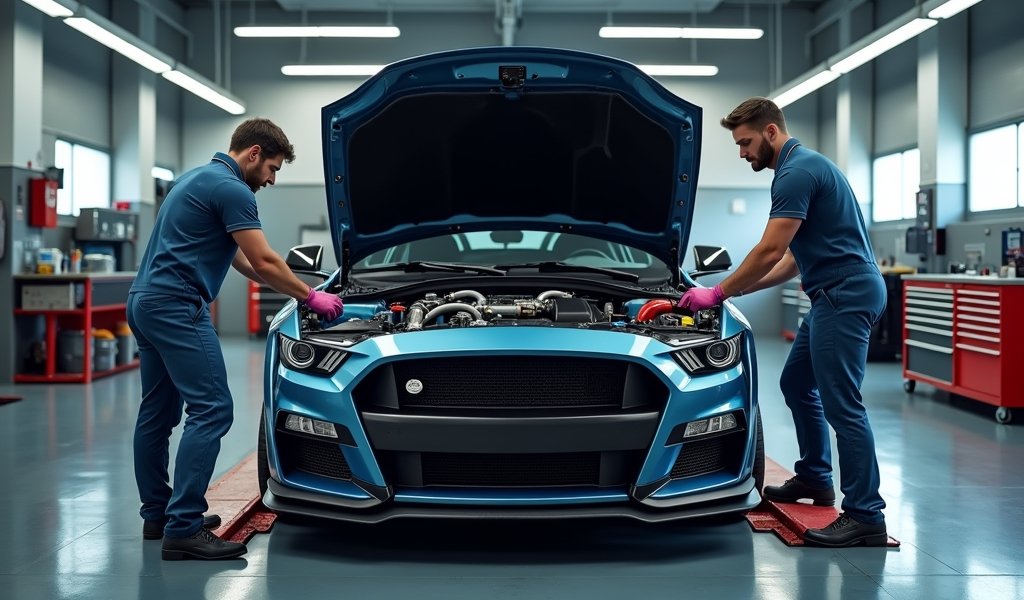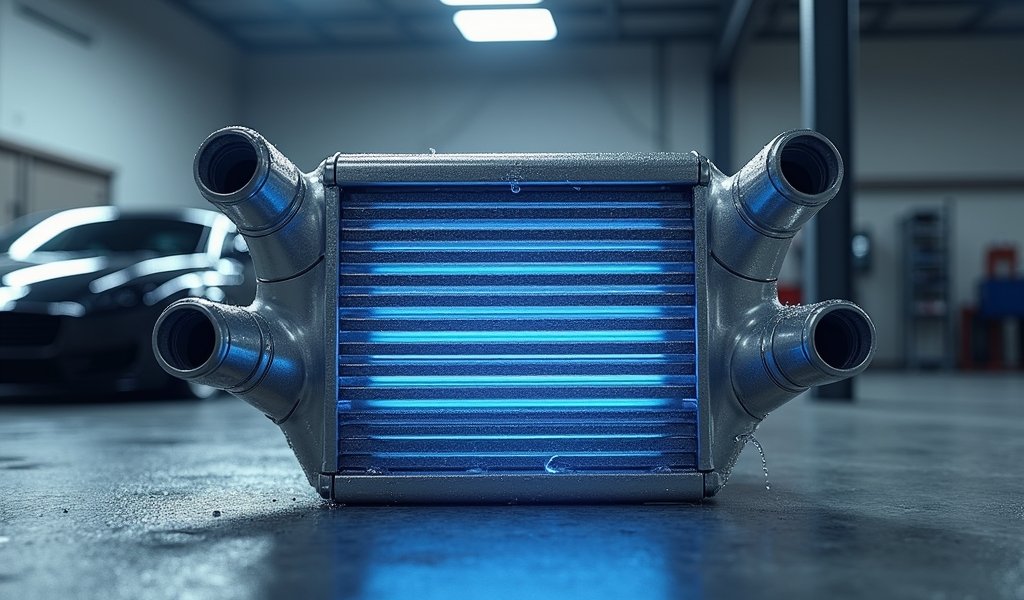Overview
This article provides a detailed guide to intercooler pressure drop testing, explaining how measuring the loss of air pressure through an intercooler can identify hidden performance issues, improve engine efficiency, and potentially unlock 10-30 horsepower. The author shares specific testing procedures, benchmarks for interpreting results (excellent: <1 PSI drop; poor: 3-5 PSI drop), common problems revealed by testing, and practical solutions ranging from simple cleaning to component upgrades.
Table of Contents
- Understanding Intercooler Pressure Drop
- Why Pressure Drop Testing Matters
- Essential Tools for Intercooler Pressure Drop Testing
- Step-by-Step Testing Procedure
- Interpreting Your Test Results
- Common Issues Revealed by Testing
- Improving Intercooler Efficiency
- DIY vs. Professional Testing
- Conclusion
- Frequently Asked Questions
Understanding Intercooler Pressure Drop
Intercooler pressure drop testing is essential for evaluating the efficiency of your forced induction system. When I first started working on turbocharged engines twenty years ago, we didn’t have the sophisticated testing methods available today. But trust me, understanding pressure drop is crucial if you want to maximize your engine’s potential.
Simply put, pressure drop refers to the loss of air pressure that occurs as compressed air travels through your intercooler. Every intercooler creates some resistance to airflow—it’s unavoidable. The trick is minimizing this resistance while maintaining effective heat exchange. Think of it like breathing through a straw; a wider straw (lower pressure drop) lets you breathe easier, just like your engine can “breathe” better with an efficient intercooler.
The physics behind this is straightforward. As your turbocharger compresses air, it creates pressure. This pressurized air then travels through piping and your intercooler before reaching the engine. Along this journey, the system encounters resistance that reduces the original pressure. An excessive pressure drop means your turbo works harder for less result—basically throwing away power that should be reaching your engine.
Why Pressure Drop Testing Matters
You might wonder why you should bother testing intercooler pressure drop when your car seems to run fine. Here’s the reality: many performance issues can hide behind seemingly normal operation. A significant pressure drop can rob your engine of 10-30 horsepower without any obvious symptoms—until you test for it.
For enthusiasts who’ve invested in aftermarket turbo kits, pressure testing becomes even more critical. These setups often push the limits of stock components, and without proper testing, you could be leaving serious performance on the table.
Beyond pure performance, there are practical benefits to minimizing pressure drop:
- Improved throttle response and reduced turbo lag
- Lower exhaust gas temperatures
- Better fuel economy under boost
- Reduced strain on turbocharger components
- More consistent performance during extended driving
I’ve seen countless cases where a simple pressure drop test revealed the root cause of performance issues that stumped other mechanics. In one memorable instance, a customer complained about inconsistent power delivery in his modified WRX. After multiple shops failed to diagnose the problem, pressure testing revealed a partially collapsed intercooler pipe—a five-minute fix for a problem that had plagued him for months.

Essential Tools for Intercooler Pressure Drop Testing
Getting accurate pressure drop measurements doesn’t require exotic equipment, but you do need the right tools. Here’s what I recommend having on hand before you start:
- Digital pressure gauges (at least two) with PSI and kPa readings
- Silicone vacuum hose (3-4mm diameter)
- T-fittings compatible with your pressure gauges
- Brass adapters for various port sizes
- Thread sealant or Teflon tape
- Basic hand tools (wrenches, screwdrivers, pliers)
The heart of your testing setup will be the pressure gauges. While budget options start around $20, I strongly recommend investing in quality gauges with digital readouts for precision. NIST-traceable calibrated gauges will provide the most reliable measurements, though they’re not strictly necessary for casual testing.
For connecting to your intercooler system, you’ll need to identify appropriate pressure ports. Many modern intercoolers have built-in ports, but older or stock systems might require adapter installation. Check your vehicle’s service manual or online forums for specific guidance on your model.
Remember that accuracy matters here. Even small measurement errors can lead to incorrect conclusions about your system’s performance. Double-check all connections for leaks before testing—even tiny air leaks will invalidate your results completely.
Step-by-Step Testing Procedure
Now let’s get our hands dirty with the actual testing process. I’ll walk you through my proven method that delivers consistent, reliable results:
- Ensure your engine is at normal operating temperature before beginning.
- Locate appropriate pressure tap points before and after the intercooler. Factory boost sensors or vacuum lines often provide convenient access.
- Install your pressure gauges at both measurement points, ensuring all connections are airtight.
- With the engine running at idle, verify both gauges read approximately the same pressure (atmospheric or slightly lower).
- Gradually increase engine RPM to build boost, keeping an eye on both pressure readings.
- At each testing point (typically 2,000, 3,000, and 4,000 RPM), record both the pre-intercooler and post-intercooler pressure readings.
- Calculate the pressure drop by subtracting the post-intercooler reading from the pre-intercooler reading at each RPM point.
- Repeat measurements 2-3 times to ensure consistency in your data.
For the most meaningful results, test under load rather than just free-revving the engine. A controlled pull in a higher gear on a flat road will give you more realistic measurements than simply revving in neutral. If you have access to a dyno, that’s even better for controlled testing.
Safety tip: Never exceed your vehicle’s redline during testing, and be mindful of traffic laws when testing on public roads. Always have a passenger record measurements so you can focus on driving safely.
The beauty of this testing method is how much information it provides beyond just the raw numbers. Pay attention to how quickly pressure builds and whether the pressure drop changes dramatically at different RPMs—these observations can reveal issues that raw numbers might not immediately highlight.
Interpreting Your Test Results
Now that you’ve gathered your pressure readings, let’s make sense of what those numbers actually mean for your intercooler’s performance. In my experience working with hundreds of forced induction setups, here are the benchmarks I use:
- Excellent: Less than 1 PSI (6.9 kPa) pressure drop at peak boost
- Good: 1-2 PSI (6.9-13.8 kPa) pressure drop at peak boost
- Acceptable: 2-3 PSI (13.8-20.7 kPa) pressure drop at peak boost
- Poor: 3-5 PSI (20.7-34.5 kPa) pressure drop at peak boost
- Critical Issue: More than 5 PSI (34.5 kPa) pressure drop at peak boost
Keep in mind that these are general guidelines. For heavily modified vehicles running significant boost (over 20 PSI), you might need to adjust your expectations slightly. However, even high-boost applications should aim for pressure drop percentages below 10% of total boost pressure.
The relationship between boost levels and manifold absolute pressure readings can provide additional insights during your analysis. If you notice that pressure drop increases disproportionately as boost rises, this often indicates flow restrictions that become more pronounced under load.
Don’t just focus on the peak numbers. The pressure drop curve across different RPM ranges tells an important story. A sudden increase in pressure drop at specific RPMs might indicate turbulence or flow restrictions at certain air velocities. Ideally, your pressure drop should increase gradually and predictably with increasing boost pressure.

Common Issues Revealed by Testing
Over the years, I’ve discovered that pressure drop testing often reveals specific problems that might otherwise go undetected. Here are the most common culprits I encounter:
Clogged or Contaminated Intercooler Cores
This is the number one issue I find, especially in vehicles with higher mileage. Oil residue from turbo seals, road grime, and even bugs can gradually build up inside intercooler passages. These deposits create friction and restrict airflow, dramatically increasing pressure drop. An intercooler that appears clean externally can still be severely restricted internally.
Undersized Intercooler Design
Some factory intercoolers simply lack adequate flow capacity, especially when matched with upgraded turbos. I’ve seen many cases where pressure drop improved by 70% or more simply by upgrading to a properly sized intercooler with appropriate flow characteristics. The compromise between cooling efficiency and flow restriction is delicate, and many OEM designs favor packaging over optimal performance.
Kinked or Collapsed Intercooler Piping
Silicone couplers and aluminum pipes can develop restrictions over time, especially with improper installation or excessive heat cycling. Even a small kink or internal collapse can create a significant bottleneck. I recommend visually inspecting all pipes and connections whenever you’re testing for pressure drop.
Restrictive End Tanks
The design of intercooler end tanks significantly impacts flow dynamics. Poorly designed tanks create turbulence and flow separation, increasing pressure drop without any visible external signs. Quality aftermarket intercoolers feature carefully engineered end tanks to minimize these losses.
The good news? Almost all of these issues are fixable once identified. Sometimes it’s as simple as thoroughly cleaning your existing intercooler, while other cases might require component upgrades. The important thing is that pressure drop testing gives you the diagnostics needed to make informed decisions.
Improving Intercooler Efficiency
After discovering your intercooler’s pressure drop characteristics, you might be wondering how to improve them. Here are my tried-and-true recommendations based on decades of wrenching on forced induction systems:
Cleaning and Maintenance
Before spending money on new parts, try a thorough cleaning. I’ve restored many intercoolers to near-new performance using this method:
- Remove the intercooler from the vehicle
- Flush with a mixture of hot water and mild degreaser from both directions
- Use compressed air to blow out remaining cleaning solution
- Soak in a bath of specialized intercooler cleaner for stubborn deposits
- Rinse thoroughly and dry completely before reinstallation
This simple maintenance can reduce pressure drop by 1-3 PSI in many cases, especially for vehicles that have never had their intercoolers cleaned.
Upgrading Your Intercooler
If cleaning doesn’t sufficiently reduce pressure drop, upgrading to a higher-flowing intercooler might be necessary. When selecting a replacement, consider these factors:
- Core type (bar-and-plate generally offers better flow than tube-and-fin)
- Core dimensions (larger face area typically allows for lower pressure drop)
- End tank design (smooth transitions reduce turbulence)
- Internal fin density (lower fin count generally flows better but cools less)
Many enthusiasts who upgrade their cold air intake systems overlook the intercooler, which can become the new bottleneck in the system. A holistic approach to your intake path will yield the best results.
Optimizing Intercooler Piping
Beyond the intercooler itself, your piping layout significantly impacts overall pressure drop. Follow these principles for optimal results:
- Minimize the total length of piping
- Eliminate sharp bends and use mandrel bends wherever possible
- Ensure consistent internal diameter throughout the system
- Use reinforced silicone couplers to prevent collapse under vacuum
- Consider upgrading to larger diameter piping for high-horsepower applications
According to research from the Society of Automotive Engineers, optimizing intercooler piping can reduce overall system pressure drop by 15-30% without changing the core itself—a cost-effective improvement for many setups.
DIY vs. Professional Testing
You might be wondering whether to tackle intercooler pressure drop testing yourself or leave it to the professionals. Having been on both sides of this equation, I can offer some perspective.
DIY testing is entirely feasible with modest investment in tools and a weekend of your time. The basic testing procedure I’ve outlined requires no specialized knowledge beyond basic mechanical aptitude. Plus, there’s something deeply satisfying about understanding your own vehicle’s systems.
That said, professional testing does offer some advantages:
- Access to high-precision equipment calibrated regularly
- Experience interpreting results across many vehicle platforms
- Ability to test under controlled load conditions (dyno)
- Familiarity with common issues specific to your vehicle model
If you’re diagnosing a specific performance problem or validating an expensive modification, professional testing might be worth the $100-200 typical cost. Many performance shops offer pressure drop testing as part of their tuning services.
Regardless of which route you choose, understanding the basics of intercooler pressure drop testing empowers you to make better decisions about your vehicle’s performance. Even if you opt for professional testing, knowing what the technician is measuring and why it matters will help you get the most from the service.
Conclusion
Intercooler pressure drop testing might seem like a niche diagnostic procedure, but it’s one of the most valuable tools in the performance tuning toolkit. Through this comprehensive approach, you can uncover hidden restrictions, validate your modifications, and ensure your forced induction system delivers its full potential.
Remember that intercooler efficiency is about balance—the perfect intercooler minimizes pressure drop while maximizing heat transfer. By understanding and measuring pressure drop, you gain insights that no dyno chart or temperature reading alone can provide.
Whether you’re troubleshooting a specific issue, planning upgrades, or simply getting to know your vehicle better, pressure drop testing delivers actionable data. And in the world of performance tuning, good data leads to good decisions.
I hope this guide has demystified the process and equipped you with the knowledge to test your own system. Your turbocharged or supercharged engine will thank you with crisper response, consistent power delivery, and possibly even some additional horsepower you didn’t know was hiding in your intercooler system.
Frequently Asked Questions
What is an acceptable intercooler pressure drop?
An acceptable pressure drop is typically 2-3 PSI (13.8-20.7 kPa) at peak boost. Anything less than 2 PSI is considered good to excellent performance.
How often should I test intercooler pressure drop?
Test annually for daily drivers or every 10,000 miles for modified vehicles. Additional testing is recommended after any performance modifications or if you notice decreased performance.
Can intercooler pressure drop cause check engine lights?
Yes, excessive pressure drop can trigger check engine lights related to boost pressure deviations. Modern ECUs monitor boost pressure and may detect when target pressures aren’t being achieved.
Is water spraying effective for reducing intercooler pressure drop?
Water spraying doesn’t reduce pressure drop directly but helps maintain efficiency by controlling heat. A cooler intercooler core has slightly lower internal air density which can marginally improve flow.
Does intercooler size affect turbo lag?
Yes, oversized intercoolers with high pressure drop can increase turbo lag. The ideal intercooler balances adequate cooling capacity with minimal flow restriction for responsive performance.

